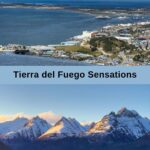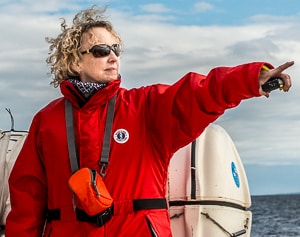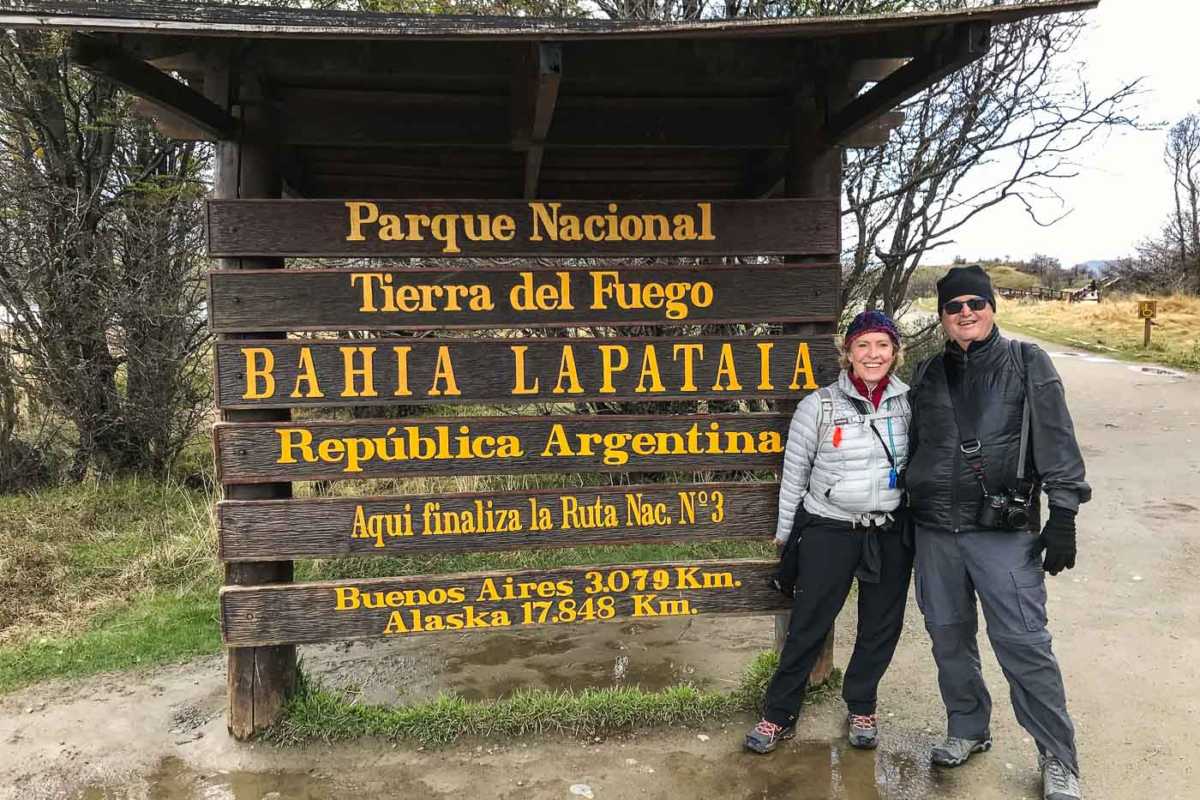
With its back to the world, the town of Ushuaia – on the island of Tierra del Fuego at the southern tip of Argentina – casts its gaze to the South. From here, the self-proclaimed southernmost city in the world (a title also claimed by the small town of Puerto Williams, Chile), the wide view is across the Beagle Channel, over the string of mountainous Chilean islands, and beyond. Way beyond, out of sight, is the Last Wilderness, the White Continent, Antarctica.
Behind us, on the north side of town, the Martial Mountains wall off the rest of the world and manage to block the winter sun as it passes low across the sky. In Ushuaia, at 54.48 degrees south, days are short in winter and light is always at a premium.
Table of Contents
Tierra del Fuego
Many who visit Ushuaia are on their way to Antarctica, as we were in early 2024 on the expedition ship Seaventure with Polar Latitudes. Our first visit, though, was strictly to explore the city of Ushuaia and Tierra del Fuego National Park over five days.
The Tierra del Fuego island, part Chilean and part Argentinian, is bordered by the Beagle Channel to the south (traversed by Charles Darwin) and the Strait of Magellan to the north. Both waterways provide more direct and hospitable sea passage between the Atlantic and Pacific Oceans at the southern end of South America than sailing around Cape Horn. South of Cape Horn is the Drake Passage with its notoriously bad weather and high seas.
(Punta Arenas, on the Strait of Magellan, by the way, is a preferred jumping off point for hiking the neighboring Torres del Paine region of Chile. But that's another story.)
Brief history of Ushuaia and Tierra del Fuego
The earliest settlement of indigenous people in Tierra del Fuego dates to around 8,000 BCE. Europeans first explored the islands during Ferdinand Magellan's expedition of 1520. Tierra del Fuego and similar names for the area arose from sightings of the many bonfires the natives built. According to one legend, the original inhabitants wore no clothes, which would certainly explain the plethora of bonfires. Tierra del Fuego is cold.
Settlement of the island, and particularly Ushuaia, by those of European descent did not begin until the second half of the 19th century, at the height of the Patagonian sheep farming boom and of the local gold rush.
In the early 20th Century, Ushuaia was also known for its military prison which developed later into a penal colony for some 600 inmates. Because of its conveniently inconvenient, remote environs, the prison population (fed from all of Argentina) was as big as the town’s, and the inmates’ work supplied all the lumber to fuel heating for Ushuaia and the prison. It was closed in 1947.
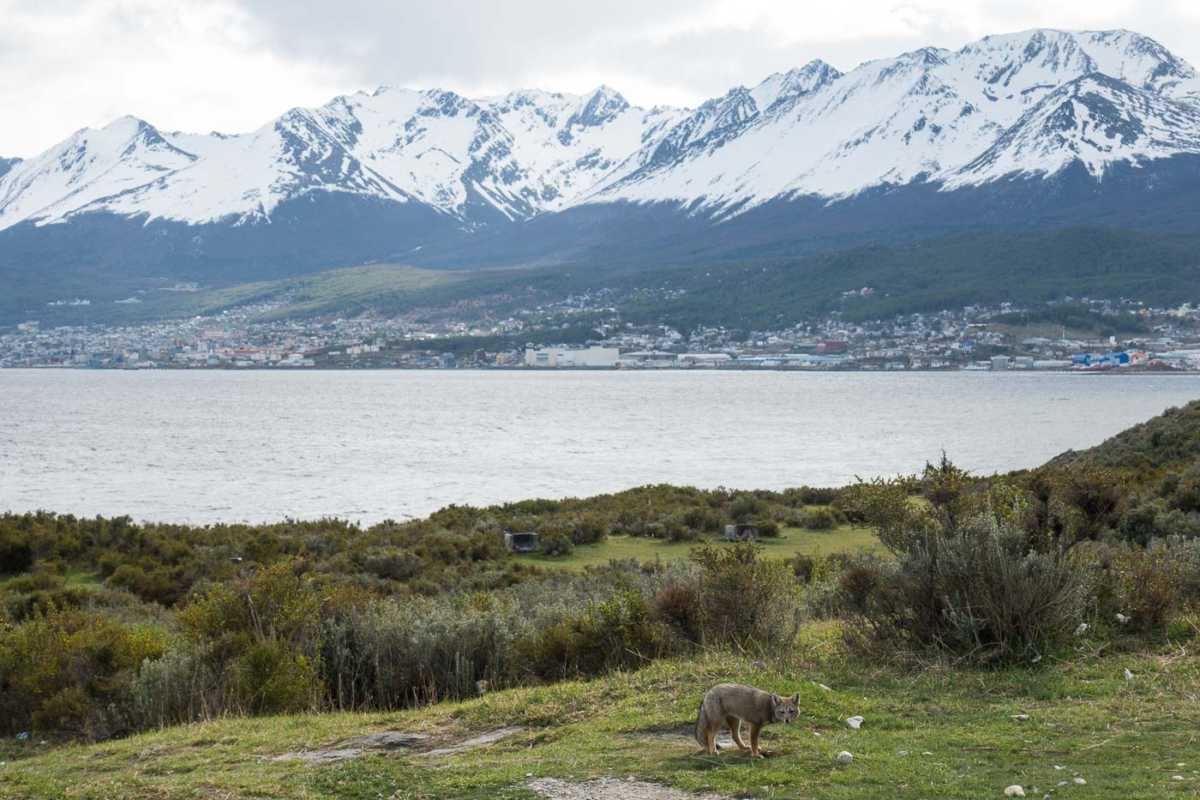
Ushuaia Today
Ushuaia, population 83,000 (it was 70,000 when we visited in 2017) is widely known as a jumping off point for cruise ships to Antarctica. We first visited with the intent of staying and exploring the town and surrounding area. It didn’t take long to appreciate why wilderness lovers want to stay here and dismiss the rest of Argentina, if not the modern human race.
Connections to the rest of the world are as sparse as the landscape. The town’s port hosts freight ships, research vessels, a few expedition cruise lines in season, and a passel of fishing boats. A shipwreck and an Argentine Navy vessel close by the esplanade reminded us of the strategic significance and this land. A new airport (1995) sits on the tongue-shaped Peninsula Ushuaia, and offers much safer landings than the old airstrip nearby.
A few roads lead out of town, and the Pan American Highway famously ends here in Tierra del Fuego National Park. But to travel even to the mainland of Argentina takes a day: 12 hours by road passing into the Chilean half of Tierra del Fuego island, followed by a ferry crossing of the Strait of Magellan, and then more driving to steer back to the Atlantic Coast of Argentina.
Best Things to Do in Ushuaia
How much time is needed to visit Ushuaia? How much time do you have?
We hope you’ll agree Ushuaia deserves consideration as a destination in its own right, not simply a port town and jumping off point. With two days in Ushuaia, you’ll find a variety of choice activities.
A walk around Ushuaia
Just to catch your breath, recoup from travels, and take in the massive scenery, spend some time wandering the main streets as well as the shores of the Beagle Channel and port areas. You’ll find souvenir shops, good places to eat, and a local craft market all within a short walk.
On the waterfront's Avenida Prefectura Naval Argentina are museums (see below) and the port (to check out which cruise lines are coming and going). Take a picture at the “End of the World” sign, step into the tourist office, and visit the fun artisan craft stalls at Enriqueta Gasturumendi's Feria de Artisanos.
Most of the restaurants and shopping are a couple blocks up, on Avenida San Martín. When you’re ready for a sweet break, duck into Ramos Generales Almacén – part restaurant, part general store, part museum of curios on Avenida Maipú. Whether you order a coffee, sandwich, beer, chocolate or pastry, you’ll be in the cozy embrace of a classic shop filled with local chatter.
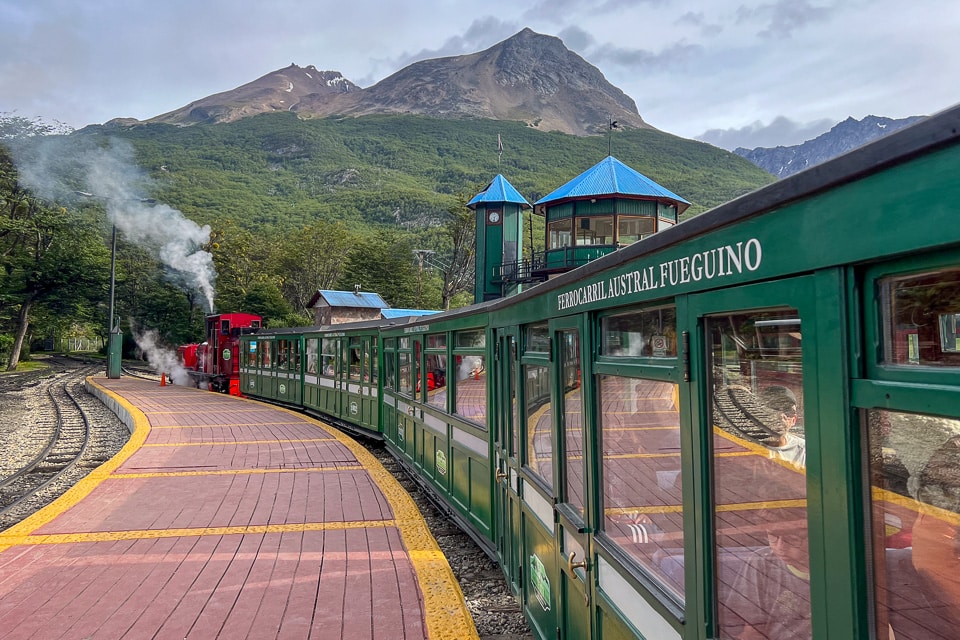
Maritime Museum of Ushuaia
The Maritime Museum, located at the East end of Ushuaia in the former prison buildings, now gathers four distinct museums in one complex. The Maritime Museum itself, so well located for its subject matter, includes exhibits covering much of the rich history of Ushuaia and its shipping: cartography, shipwrecks, models, and story after story about the people – from ancient settlers to worldly explorers. Support for the non-government run Maritime Museum comes from donations and ticket and book sales.
In the same complex is the Prison Museum of Ushuaia operated by Argentina Ministry of Justice. Visitors will see the cells, corridors and workshops used over 100 years ago, and learn about the life of convicts and their guards, a huge part of Ushuaia’s early 20th Century identity.
Also part of the Maritime Museum are the Marine Art Museum of Ushuaia and the Antarctic Museum of Ushuaia with its fascinating collection of ship models, photos, film, postcards, and more documenting early exploration of the waters and continent to the South.
Museo del Fin del Mundo
For historic and natural science aspects of the Fin del Mundo territory, visit this small museum housed in the former government house on Maipú street.
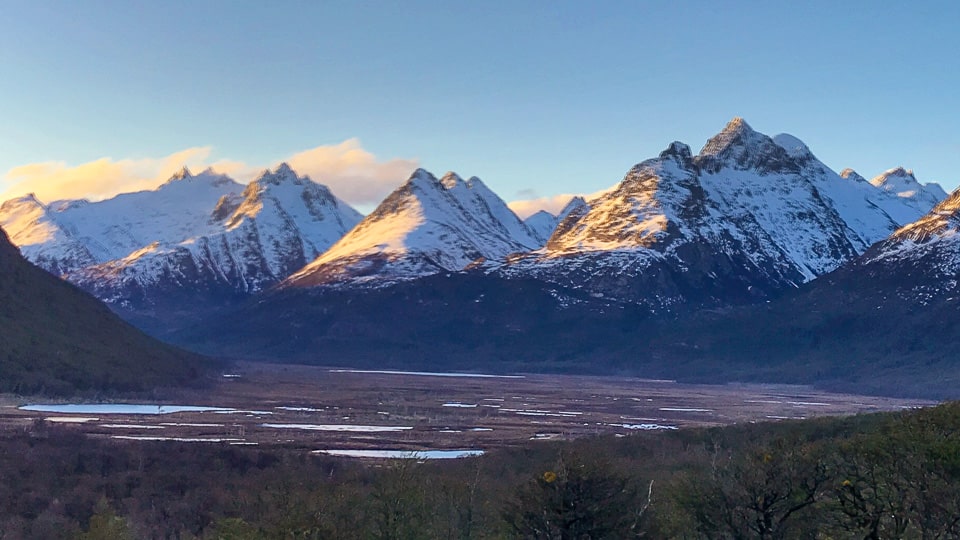
Estancia Harberton
Next time we visit Ushuaia, we’ll be sure to check out the Estancia Harberton, about an hour and a half drive from the downtown area. This is a private estate providing guided tours of the old homestead (first built by Thomas Bridges, a missionary who arrived here in 1886) and its own history museum.
The Acatushun Museum of Birds and Marine Mammals, with thousands of species on display, looks like a great way to prepare for (or relive) wildlife viewing in both Tierra del Fuego and Antarctica. Or for those whose final destination is Ushuaia, visiting penguins on Penguin Island will be a must. The trips to Martillo Island to view Magellanic penguins are booked separately from the Estancia, which owns the island but not the tours.
Estancia Harberton offers lodging and restaurant service from October through March.
A boat tour
Check in with the visitors office or tour providers near the port to see if you can hop a boat trip day tour of the Beagle Strait.
Day hikes
Whether guided or self-guided, there are fine hiking routes in and around Ushuaia. We enjoyed an easy walk right out the door of our Arakura Hotel, for example. All hotels and tour offices are happy to give you options.
Tierra del Fuego National Park
Many guided tours of Tierra del Fuego National Park are available, including bus service and park admission, for an enjoyable half or full day trip. These often just run you to the most scenic points for photos, with some historic and wildlife information tossed in. If your time in Ushuaia is short, this is a simple introduction.
End of the World Train
Also known as the ‘convict train,’ this popular (read: touristy) option is an alternate way to enter the Tierra del Fuego National Park. The confusing ticketing at the principle train station manages your park entry (required) and your train ticket. The one hour train ride comes accompanied by a narrated history of the prison and the convicts’ work. Prisoners built the train line in the early 1900s. As the End of the World Train passes slowly through a boggy area, the old stumps left behind by their intensive logging are still visible. The highlight for me was spotting a fox; the lowlight was having to listen to the awful musical background to the narration. Headset channels are in seven languages. Advance tickets (online) recommended.
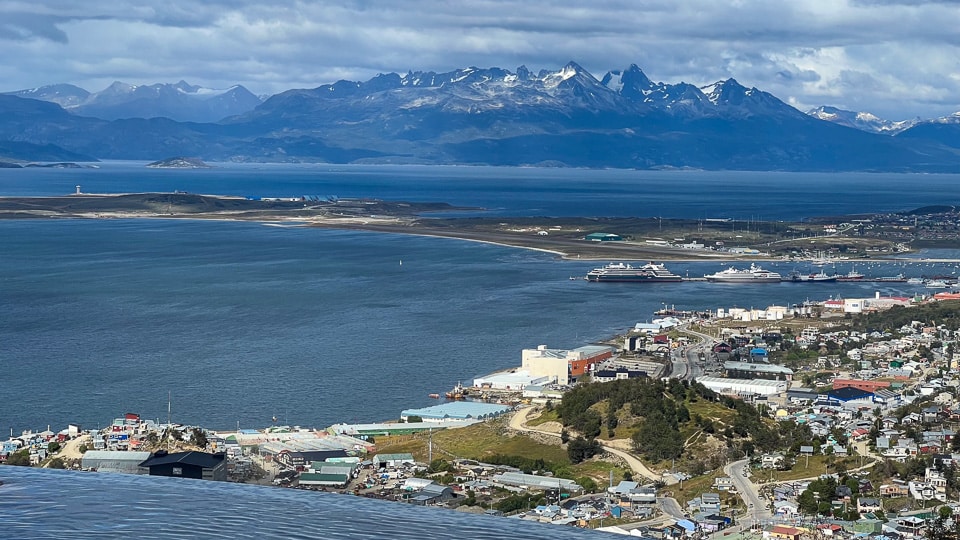
Pamper yourself in a resort spa
Ushuaia is home to several top notch resort hotels with spas. Whether you are coming off a ski mountain, cold arctic waters, or connecting flights, this is the perfect place to settle yourself with good food, spectacular views, gentle exercise, and warm spa baths. See hotels below.
Ski
If you are lucky enough to stay on in Ushuaia outside of the main cruise season, you can enjoy some of Patagonia's best skiing nearby. There are many options, from Martial Glacier visible from town, to the more remote and elite Cerro Castor Ski Resort 26 kilometers away.
Planning to go to Antarctica? Learn how to select an expedition style that suites you in our post, “Best Antarctica Cruise: Immersive Polar Expedition.” You'll enjoy the pictures, too.
Remember for all your adventure travel (and isn't all travel an adventure?) to get your travel insurance. Affordable plans with Allianz Travel Insurance include annual plans like ours.
Explore greater Tierra del Fuego
With five days or more in Ushuaia, select any of the great things to do in Ushuaia from the list above, and add three days more to explore the natural habitat of Tierra del Fuego.
When we visited in October 2017, in early spring, we joined up with our expert guide Juan Ronco of Tierra del Fuego Aventura. We must have won some cosmic lottery to be matched up with Juan, whose passion and knowledge carried us along throughout the itinerary.
Over three days, we hiked, ate, and imagined life here from the earliest explorers’ time. Hikers and nature lovers take note: you'll feel a direct connection here to the few people who've tread this ground, simply because they number so few.
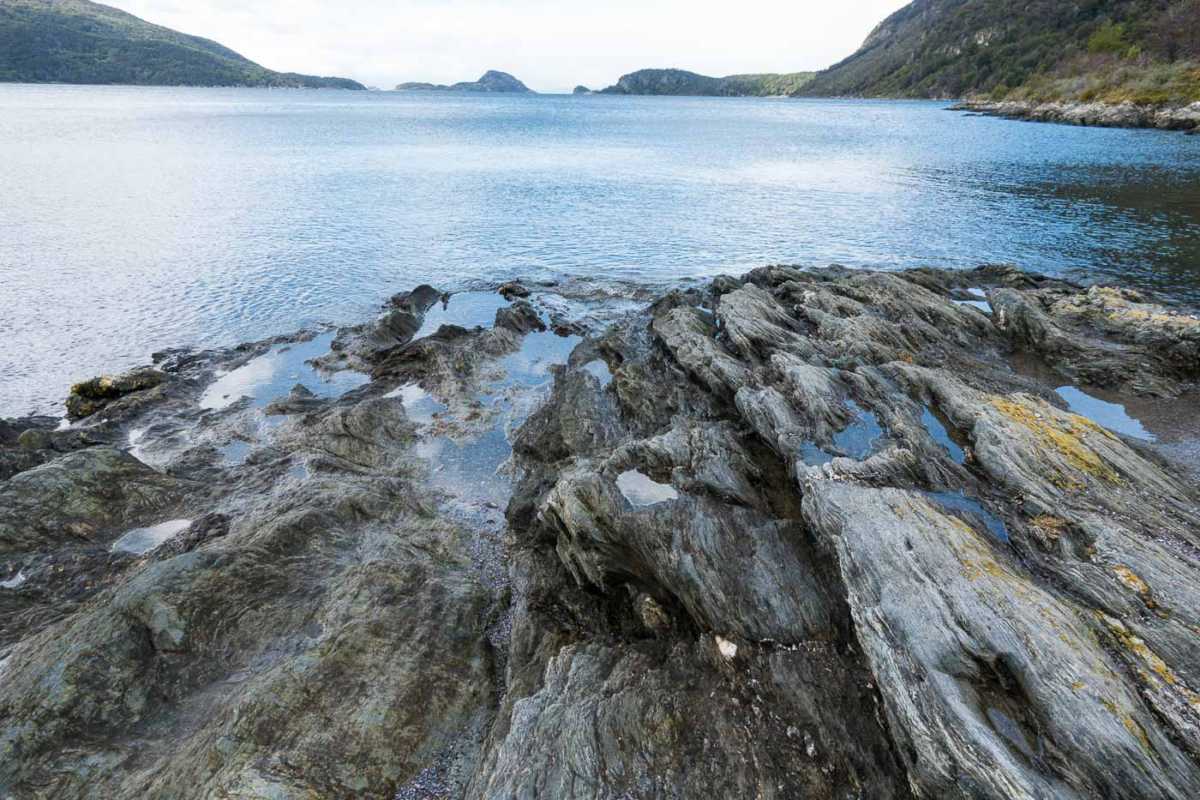
Forests, Lakes, Bogs, Mountains, Condors, Historic Huts
Our walks took us through hills and valleys where we felt the persistent winds. We noted peat bogs, fast cold rivers, and scrappy woods with stark vegetation (winter’s bark, lenga, beech). We spotted water and song birds, as well as a fox. And we saw the massive changes in landscape made by North American beavers introduced in the mid 20th Century.
Driving toward the tree line at 600 meters, we stopped for a view of Lago Escondido, and ended up staying for a half hour performance by a young condor.
We bounced off road to the enormous Lago Fagnano, which slices nearly all the way through Tierra del Fuego. Then we rested in a hollow to picnic, protected from the loud crashing waves and blustery wind.
Every shore line delivered enormous views of dark gray rocks, clear water, white-capped mountains, and blue sky to us small people.
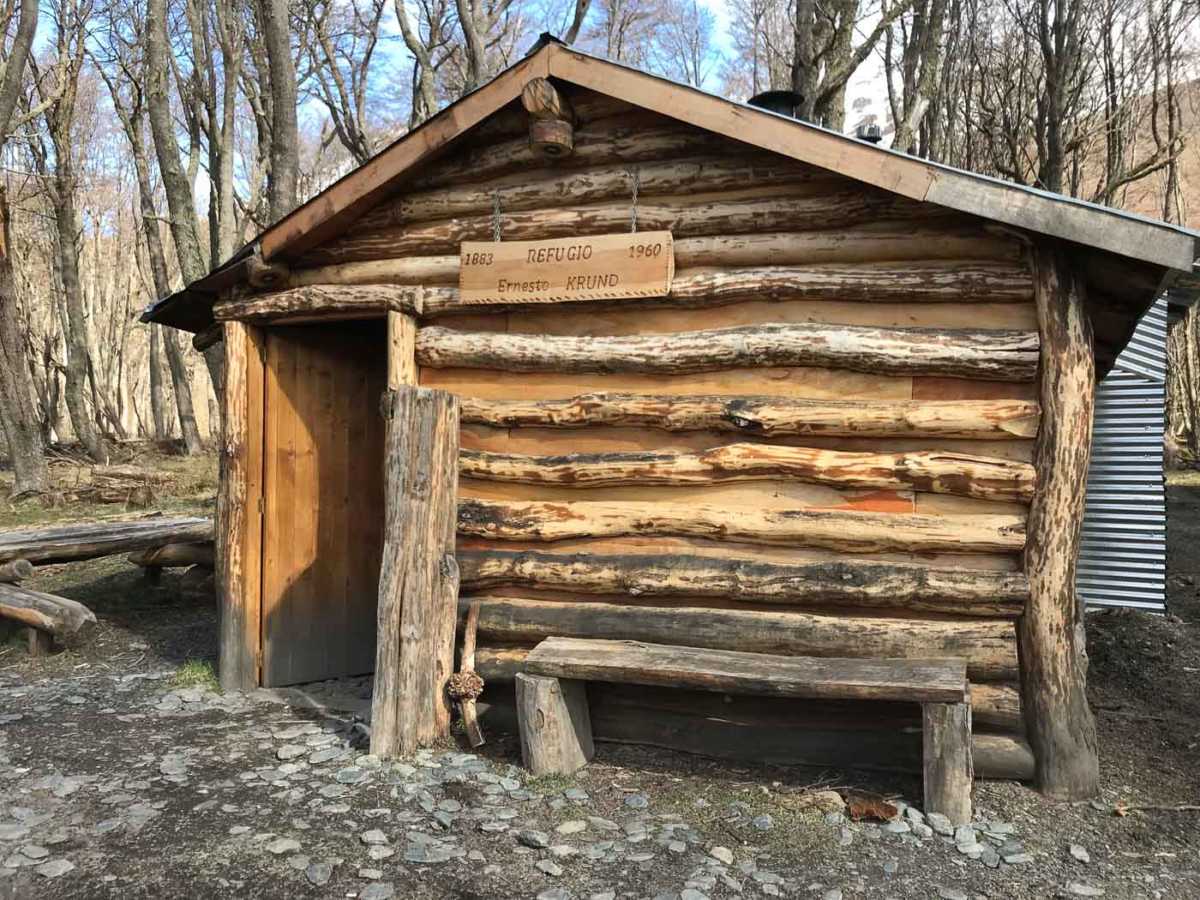
The beauty of Tierra del Fuego
In a way, it's senseless to write too much about the beauty of Tierra del Fuego when technology allows you to carry a camera without resorting to a pack mule. We spent five days in Ushuaia and spent all of those hiking and spotting vistas like these. It was pretty much non stop, except for the times we were driving to new locations. And then we stopped many times to get views from the road.
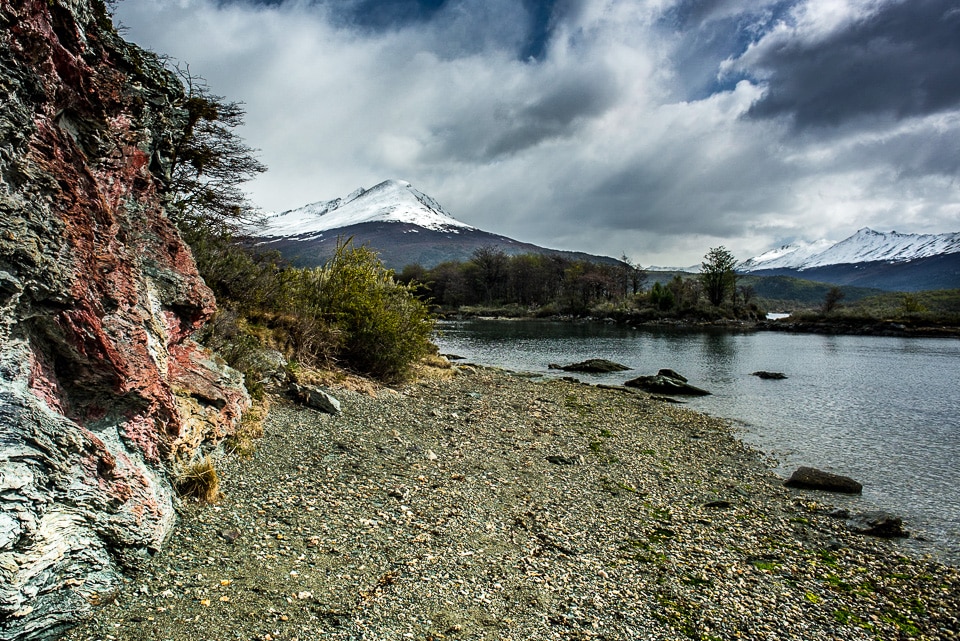
One of the benefits of hiking all around Tierra del Fuego (aside from learning to like wet feet) is the consistent vistas of water, rock, and snowy mountains. The southern spring provides plenty of snow and water–and lovely clouds–to make your landscape even more inviting. Even in warm spring, bring layers, because the weather can change in a matter of minutes. On one side of a hill, you're in warm sun. On the other, a cold breeze kicks up from the Beagle Strait. As anyone who has been to this part of the world can tell you, there's a bit of a wind. Constant wind. The chill wind that vexed mariners since Magellan first sailed through here. It's not a part of the world for the faint hearted. But the rewards are manifest. Just look up.
Resources
Since this trip, I’ve been reliving the hikes and reading more about the ‘land of fire” (named for the fires the native Yamana peoples used to communicate across distances). Our guide Juan is featured in a book, Fire Walking, about his trek with two others around the entire Mitre peninsula of Tierra del Fuego. The simple diary conveys respect for the few people who’ve visited this territory and shared refuge, and demonstrates the earnest desire to be lost in nature even as it's being discovered.
Tierra del Fuego Aventura Expeditions and tours in Tierra del Fuego and beyond.
Other popular activities include fly fishing in the myriad nearby streams and skiing at Cerro Castor, just outside Ushuaia.
The overall sensation of visiting Ushuaia’s environs is of being among a fortunate few to walk around this vast place; of being a bit player among the earth’s elements; of enjoying the juxtaposition of flora and fauna against the rocks, water, and sky; of focusing on Tierra del Fuego with our backs to the rest of the world.
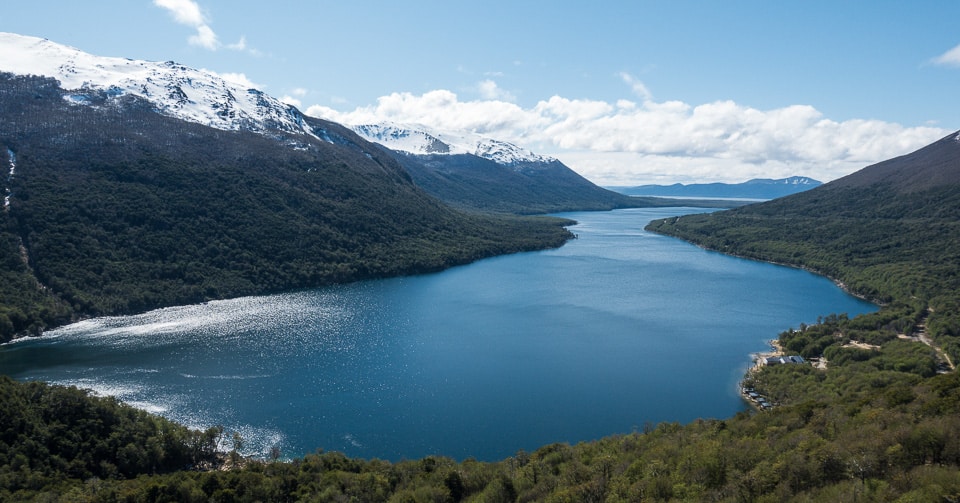
Where to eat in Ushuaia
La Cantina Fueguina De Freddy on San Martín is the place to get your seafood on. If you are lucky, king crab will be in season.
Kuar 1900
María Lola Restó
Ramos Generales El Almacén, for all the reasons stated above in your walk about town.
Cravia, at the Arakur Ushuaia Resort, for serene views and excellent trout with a good bottle of wine.
Where to stay in Ushuaia
Arakur Ushuaia Resort Hotel and Spa. Uphill from Ushuaia, hence the incredible views, including from a warm infinity pool. Besides the restaurant, we enjoyed the bar lounge, lobby, and work spaces, all friendly and comfortable and decorated with sublime wool textiles by artist and costume designer Evelyn Bendjeskov.
Las Hayas Resort
Los Cauquenes A wonderful resort, so nice I skipped a bit of touring to enjoy the view and the food and my comfortable room.
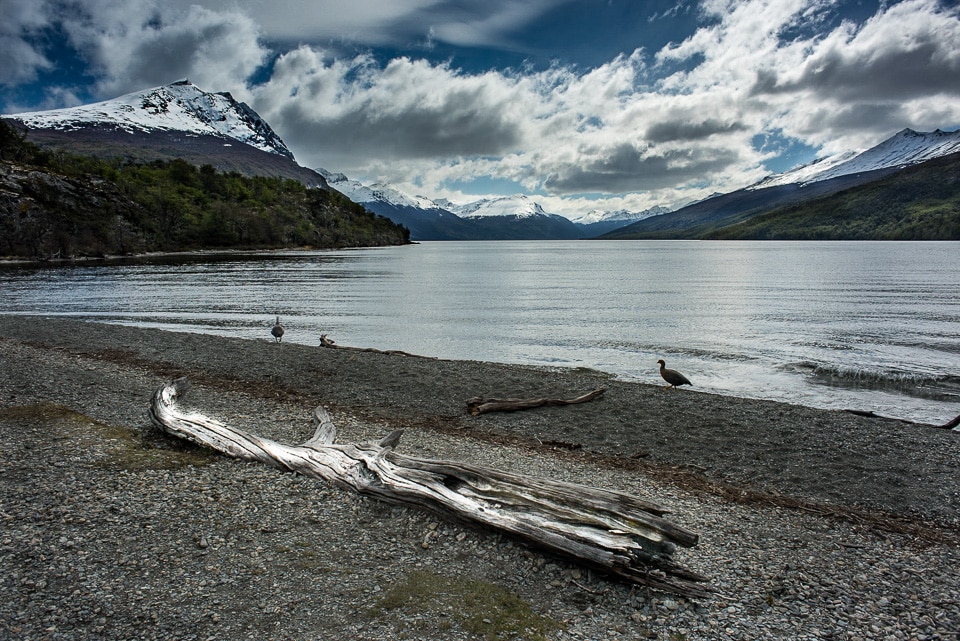
How to get to Ushuaia
Assuming you aren’t arriving by land and the Pan-American Highway, you will likely pass through Buenos Aires. Flights from Buenos Aires to Ushuaia depart from either of two airports, so be aware of your connecting times. Or better yet, stay a while in Buenos Aires on your way.
Another popular spot served by direct flights from Ushuaia is El Calafate, in Argentinian Patagonia. Calafate sits beside the great Perito Moreno Glacier and the entrance to Los Glaciares National Park.
See the details of our trip to Buenos Aires here. Also, wine is an essential element of any visit to Argentina. Check out our story on our Buenos Aires wine tour here.
When to visit Ushuaia
The best time of year to visit Ushuaia? The summer months of October to March are the high season for tourists, and the season for cruise ships to pass this way. In the winter months, however, the ski season kicks into high gear. Snowy peaks dominate the views and Argentinians in the know flock to the best winter sports region of the country.
Up Your Travel Skills
Looking to book your next trip? Use these resources that are tried and tested by us. First, to get our best travel tips, sign up for our email newsletter. Then, be sure to start your reading with our Resources Page where we highlight all the great travel companies and products that we trust. Travel Accessories: Check out our list of all the accessories we carry to make getting there and being there a lot easier. Credit Cards: See our detailed post on how to choose the right travel rewards credit card for you. Flights: Start finding the very best flight deals by subscribing to Thrifty Traveler. Book your Hotel: Find the best prices on hotels with Booking.com. See all of the gear and books we like in one place on our Amazon shop.Got a comment on this post? Join the conversation on Facebook, Instagram, or Threads and share your thoughts!

